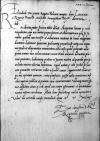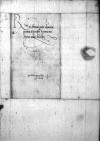List #2771
Elisabeth of Austria do Ioannes DANTISCUSVilnius, 1544-12-02
| odebrano Heilsberg (Lidzbark Warmiński), 1544-12-14 Rękopiśmienne podstawy źródłowe:
Publikacje:
| ||||||
Tekst + aparat krytyczny + komentarzZwykły tekstTekst + komentarzTekst + aparat krytyczny
Reverendo in Christo Patri, domino
Reverende in Christo Pater, sincere nobis dilecte.
Accepimus litteras Paternitatis Vestrae singularem erga nos animi propensionem et observantiam prae se ferentes, quibus nos invisit et adventum nostrum in hunc
Quod autem Paternitas Vestra scribit, se
Illam bene feliciterque valere optantes.
Ex commissione s(erenissimae)


 BCz, 1598, p. 182
BCz, 1598, p. 182